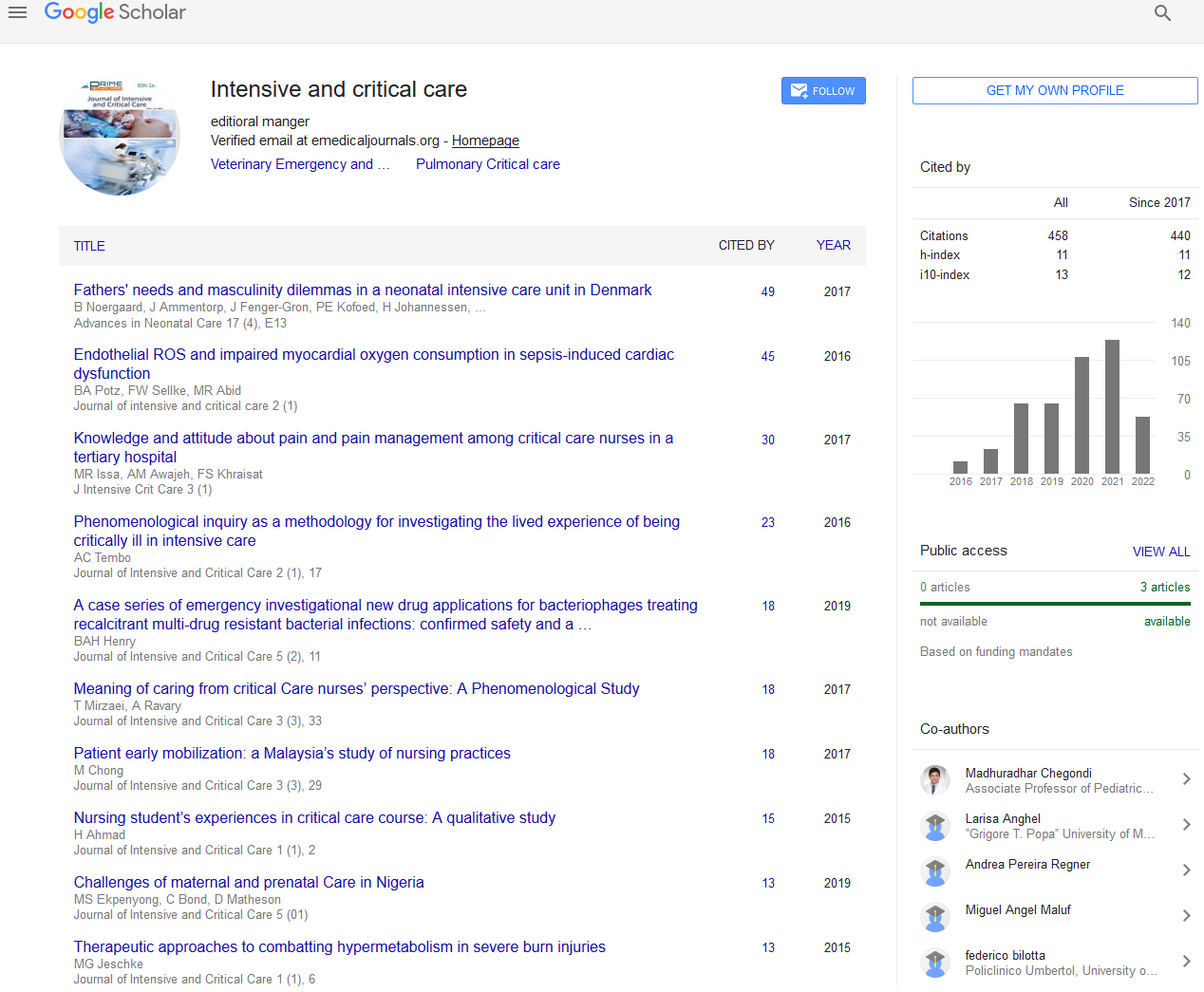Nafeez Basha*
Department of Pharmacology, Nandha College of Pharmacy, Erode, Tamilnadu, India
- Corresponding Author:
- Nafeez Basha
Department of Pharmacology
Nandha College of Pharmacy, Erode, Tamilnadu, India
E-mail: nafeez.pharma@gmail.com
Received Date: July 16, 2020; Accepted Date: July 25, 2020; Published Date: July 30, 2020
Citation: Basha N (2020) ICU Management. J Intensive & Crit Care Vol.6 No.3:1. doi:10.36648/2471-8505.6.3.12
Copyright: © 2020 Basha N. This is an open-access article distributed under the terms of the Creative Commons Attribution License, which permits unrestricted use, distribution, and reproduction in any medium, provided the original author and source are credited.
The care of hospitalized critically ill patients must be suitably balanced independently of the functional unit to which they have been admitted. Most of these patients are admitted to the Intensive Care Unit (ICU), where uninterrupted management is provided, with important technological and care resources. However, hospitalization of the critically ill patient must be understood as a scale of starting and ending beyond hospital stay. Expecting critical worsening of patient requiring admission to the ICU would be of benefit to the patient, avoiding greater clinical worsening, and also would be of benefit to the hospital, by allowing improved resource management.
Extended Abstract
The care of hospitalized critically ill patients must be suitably
balanced independently of the functional unit to which they
have been admitted. Most of these patients are admitted to the
Intensive Care Unit (ICU), where uninterrupted management
is provided, with important technological and care resources.
However, hospitalization of the critically ill patient must be
understood as a scale of starting and ending beyond hospital
stay. Expecting critical worsening of patient requiring admission
to the ICU would be of benefit to the patient, avoiding greater
clinical worsening, and also would be of benefit to the hospital,
by allowing improved resource management.
Intensivists are the professionals best fitted to this purpose,
since they're trained to acknowledge the seriousness of an
always dynamic clinical situation. Addressing this task implies a
change within the traditional way of working of the ICU, since a
critical patient isn't only a patient already admitted to the Unit
but also the other patient admitted to hospital whose clinical
situation is becoming destabilized. In this circumstance, ICU has
established two planned lines. One consists of the identification
of patients in danger outside the Unit and is predicated on the
popularity, diagnostic orientation and early treatment of the
seriously ill patient, in association with other clinical hospitals and
independently of the hospital area to which the patient has been
admitted. The second line successively comprises clinical care
within the particular Unit, and is predicated on the promotion of
safety and therefore the vigilance of nosocomial infections.
The approach adopted by this organizational model of the
activities of the Intensive Care Unit has several connotations. A
first and simple concern is to actively ensure the care of those
patients admitted to the ICU properly in an efficient, effective
and safe manner. This is easily generalizable, requiring the
modifications logically related to the individual characteristics
of each center and Unit. It is also necessary, and to one degree
or other, and in a more or less systematized manner, has always
been present in our professional activity.
A second and not always easily generalizable concern is the
change in the traditional functional model of the ICU at both
organizational and conceptual levels. In effect, the patient is
no longer seen as only the individual admitted to the Unit, but
now moreover also includes those individuals whose clinical
condition can worsen, regardless of where they're hospitalized,
because early clinical care in such cases can benefit the ulterior
patient course. Benefit in this case is not limited to the patient,
since modifying patient flow from the emergency circuit to the
preferential care circuit makes it possible to lessen the burden
upon the former–supervised only by professionals on duty. More
precise knowledge of the clinical situation of these evaluated
patients therefore allows for improved management of the
existing resources. Lastly in our experience, working closer to the
rest of the clinical specialties has served to improve knowledge
of our daily work as intensivists, affording greater professional
recognition and, undoubtedly, a greater institutional influence on
the part of our Unit within the hospital.
Source: https://www.medintensiva.org/en-introductionmanagement-
system-in-intensive-articulo-S2173572711000245

